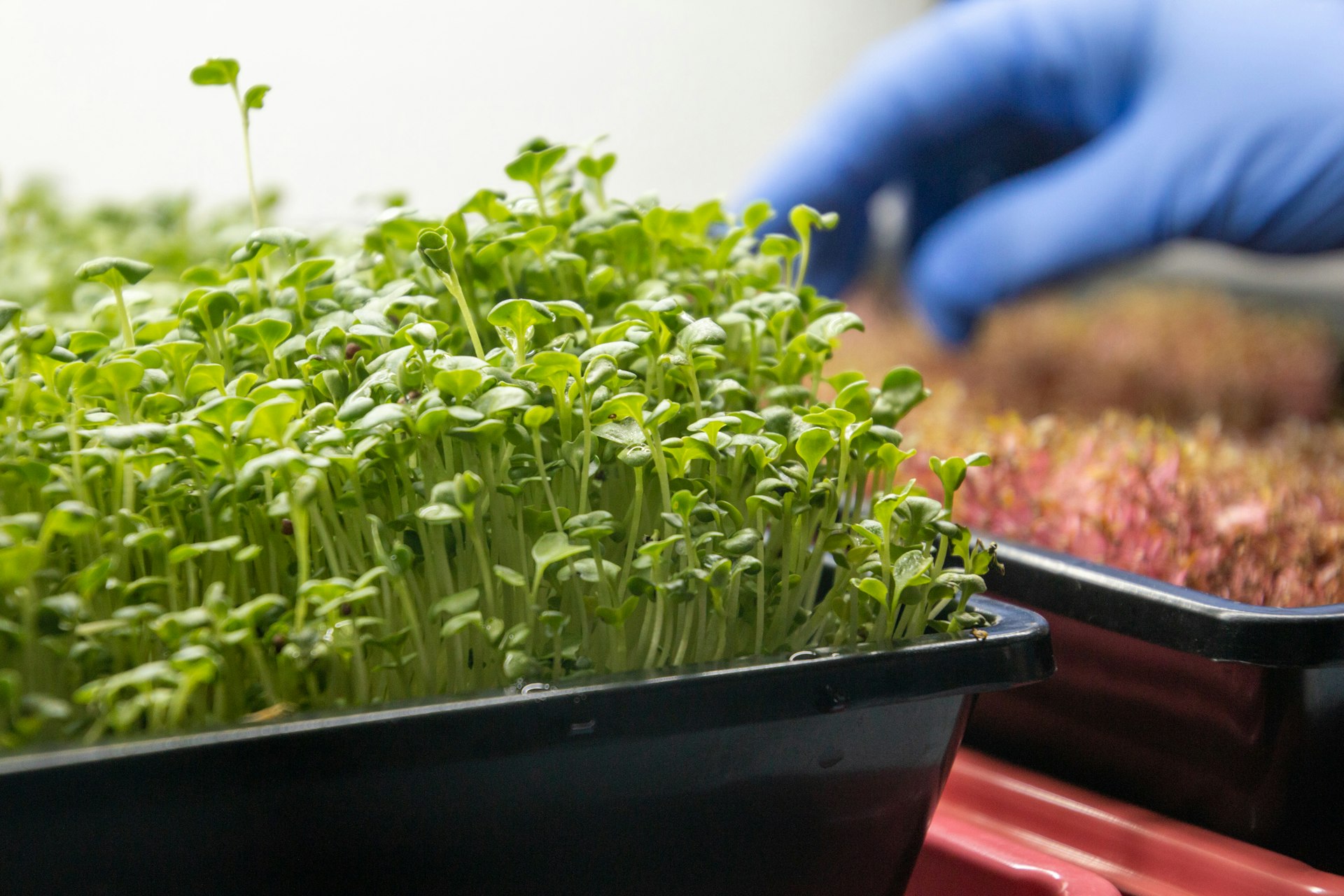Biotechnology: Transforming the Future of Food Production

Photo by Loa Kon on Unsplash
Introduction: The Coming Revolution in Food Production
The global food system is undergoing a profound transformation. Driven by rapid advancements in biotechnology, the future of food production promises greater sustainability, higher yields, and innovative ways to nourish a growing population. As climate change, resource scarcity, and shifting consumer preferences put pressure on traditional agriculture, biotechnology emerges as a critical solution, offering new methods to produce, process, and distribute food [1] .
How Biotechnology is Reshaping Food Production
At the heart of this revolution are genetic engineering and gene editing technologies. Modern tools such as CRISPR and advanced breeding techniques enable scientists to enhance crop traits more precisely and efficiently than ever before. By 2025, over 60% of new crop varieties are anticipated to be developed using these methods [1] . Gene-edited crops can be made more resistant to drought, pests, and diseases, reducing reliance on chemical inputs and improving yield stability even as environmental conditions change.
These advances are complemented by the digital transformation of agriculture. Technologies such as AI, satellite imagery, and sensor-driven data analysis allow for precision farming, optimizing resource use and minimizing environmental impact. Farmers can now make data-driven decisions about planting, irrigation, and harvest timing, resulting in increased efficiency and reduced waste.
Sustainability and the Circular Bioeconomy
One of the most compelling promises of biotechnology is its potential to make food production more sustainable. Biotech solutions help integrate agriculture into a circular bioeconomy , where waste is minimized and by-products are valorized [2] . For example, precision fermentation enables the creation of high-value ingredients-such as proteins, enzymes, and flavors-without the environmental footprint of traditional agriculture. Companies are also developing packaging materials from bio-based sources, reducing dependence on single-use plastics [3] .
Real-world case studies highlight these trends. In Norway, transdisciplinary projects are using cellular agriculture to produce milk, egg, and meat proteins from local raw materials, aiming to reduce land use and greenhouse gas emissions [4] . Other startups are converting carbon dioxide directly into protein ingredients using ancient microbes, providing a scalable, climate-friendly solution that requires neither farmland nor conventional agricultural inputs [5] .
Emergence of Alternative Proteins and Cellular Agriculture
Biotechnology is also at the forefront of the alternative protein revolution. Cellular agriculture-encompassing both precision fermentation and cultivated (lab-grown) meat-enables the production of animal proteins without raising or slaughtering animals [4] . These methods not only reduce the environmental impact of meat production but also address ethical concerns and improve food safety by minimizing the risk of zoonotic diseases.
Startups worldwide are creating hyper-realistic meat and dairy alternatives, using mycelium, microbial fermentation, or plant cells. The market for these products is rapidly growing, with business projections estimating that the food biotech sector could generate at least $7.5 trillion by 2030 [3] .
Implementing Biotechnology: Steps and Guidance
For farmers, entrepreneurs, and businesses interested in adopting these innovations, the process can involve several key steps:
- Education and Training: Engage with local agricultural extension services, universities, or professional organizations to learn about the latest biotechnological tools and methods. Many regions offer workshops, online courses, and demonstration farms where new techniques are showcased.
- Collaboration: Consider partnerships with biotech companies, research institutions, and technology providers. Collaborative projects can help share costs, access expertise, and accelerate innovation.
- Regulatory Compliance: Biotechnology is subject to national and international regulations. Before deploying gene-edited crops or producing alternative proteins, consult with your country’s agriculture or food safety authorities. For U.S. producers, the USDA, FDA, and EPA oversee different aspects of biotech products. You can search for guidance on their official websites or contact local representatives for step-by-step requirements.
- Funding and Support: Many governments and organizations offer grants, incentives, or loans to support biotechnology adoption in agriculture. To find opportunities, search for agricultural innovation grants in your region or visit the websites of industry groups such as the Food and Agriculture Organization (FAO) or national research councils.
- Consumer Engagement: The success of biotech foods often depends on public acceptance. Engage with consumers through transparent communication, offering information on the safety, environmental benefits, and ethical considerations of biotech products. Collaboration with advocacy organizations and participation in public forums can help build trust.
If you are interested in learning more about specific programs or accessing professional resources, consider these approaches:
- Contact your local agricultural extension office or university agriculture department for workshops on biotechnology.
- Search for “biotechnology in food production” on reputable educational platforms or industry association websites.
- Reach out to biotech startups or established companies featured in trusted business news sources for partnership opportunities.
Challenges and Solutions in Biotech Food Production
Despite its transformative potential, biotechnology faces several challenges:
- Regulatory Hurdles: Approval processes for new biotech products can be lengthy and complex. Engage early with regulatory bodies and consider participating in public consultations to help shape policy.
- Consumer Perception: Misinformation and skepticism about genetically modified or lab-grown foods may slow adoption. Educational outreach and transparent labeling are key to increasing acceptance.
- Infrastructure Needs: Advanced biotech production may require investments in new facilities, equipment, or training. Many governments and industry groups offer support for infrastructure upgrades-search for “food technology infrastructure grants” in your country to explore options.
Alternative approaches include starting with pilot projects or collaborations with academic research centers. This can reduce costs and risks while building expertise before scaling up.
Case Studies and Emerging Trends
Recent projects illustrate the range and impact of biotechnology in food production:
-
An Austrian startup is converting CO
2
into amino acids using microbes, highlighting the potential for climate-positive food ingredients [5] . - In Europe, precision fermentation is producing cocoa and dairy proteins without traditional agriculture, expanding access to sustainable, allergen-free foods [2] .
- Norwegian projects are pioneering the use of locally sourced by-products in cellular agriculture, creating new value chains and reducing waste [4] .
How to Access Biotech Opportunities and Services
For those seeking to participate in or benefit from the biotechnology revolution in food, several pathways are available:
- Research Funding: Look for national or regional innovation grants. For example, in the EU, programs like Horizon Europe fund biotech research and startups. In the U.S., USDA’s National Institute of Food and Agriculture provides grant opportunities. Check their official websites for application instructions.
- Business Partnerships: Reach out to technology incubators, food innovation hubs, or startup accelerators that specialize in agri-food biotech. Many offer mentorship, funding, and networking opportunities.
- Policy and Regulatory Guidance: Contact relevant government agencies or industry bodies for up-to-date regulatory requirements and support services. Start by searching for “food biotechnology regulations” and your country name on official agency websites.
Remember to use only official channels or well-established organizations when seeking support or guidance. If you need consumer-oriented resources, look for educational materials from consumer advocacy groups or government health agencies.
Key Takeaways and Next Steps
Biotechnology is set to play a defining role in the future of food production. It offers pathways to greater sustainability, expanded protein sources, and resilience against climate change. By staying informed, seeking partnerships, and leveraging available support, individuals and businesses can actively participate in this evolving landscape.

Photo by Liza Golyarchuk on Unsplash
For the latest updates on biotechnology and food innovation, consider subscribing to newsletters from major agricultural research institutes or following updates from industry associations. Always verify the credibility of sources and consult official agencies for regulatory or funding information.
References
- [1] Farmonaut (2025). Biotechnology Innovations in Agriculture: 2025 Advances.
- [2] I4CE (2025). Biotechnology and Agri-Food: A Revolution in Progress.
- [3] EIT Food (2025). Top 5 food trends to watch in 2025.
- [4] Nofima (2025). Enabling biotechnology for future food production.
- [5] ICL Group (2025). Emerging Foodtech Trends and Innovations In 2025.
MORE FROM hotondeals.com













